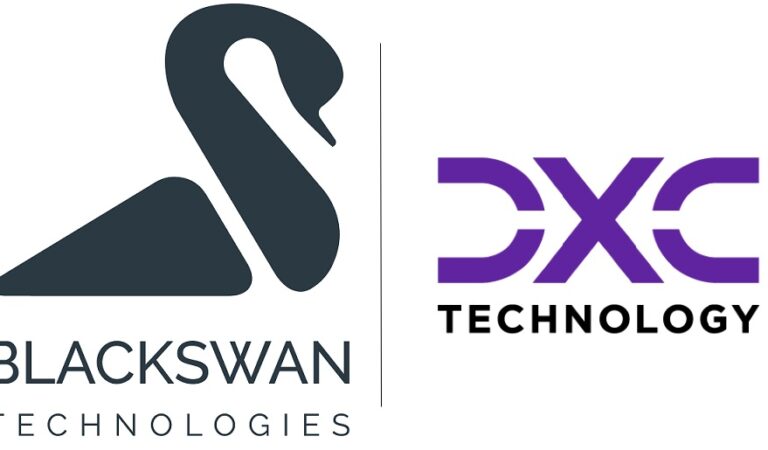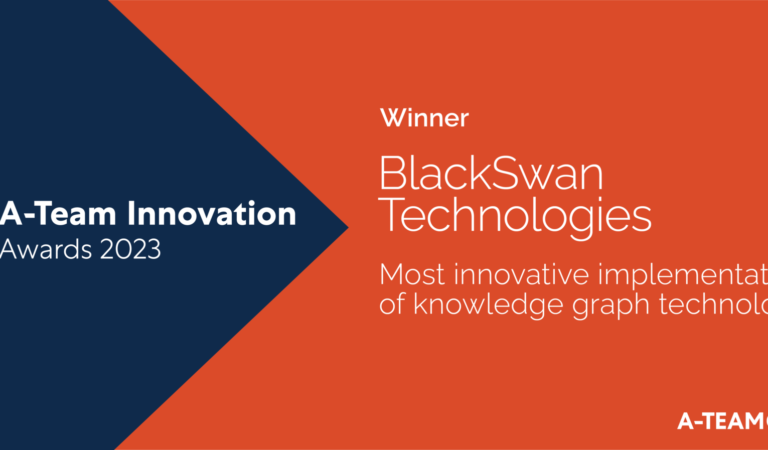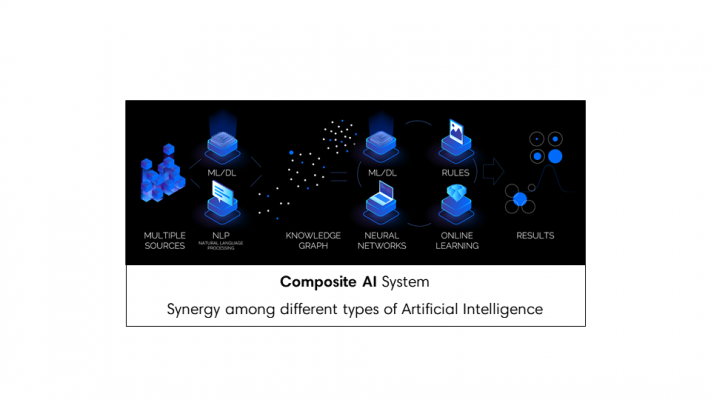
Nov. 17, 2020
Composite AI in Action with ELEMENT™
By Adam Krolak @BlackSwan Technologies
A leading-edge approach that addresses complex business challenges by capitalising on synergies between different types of AI.
Are you pursuing digital transformation and planning to use AI to augment your data analysis, customer experience, or new product development? If your search for data insights has been restricted by the limitations of machine learning (ML) alone, there is good news:
- Composite AI is a breakthrough approach combining multiple AI techniques to more deeply interpret data and efficiently solve a wider range of business problems. The techniques applied may include: knowledge graphs, natural language processing, contextual analysis, machine learning, deep learning, and other methods.
- This multi-modal approach creates a path to enable more human-like decision-making in finance, healthcare, government, supply chain, customer experience, and more, with minimal need for specialized data scientists and lengthy data integration projects. It gives a business team the power of augmented intelligence, allowing them to focus on the most difficult, or profitable, decisions.
- Composite AI is most effective when integrated into a complete enterprise software platform that incorporates insight-driven alerts and workflows, data visualisation and situational dashboards, organizational policies, and privacy protections. This democratizes business access to the many benefits of AI and shortens cross-company digital transformation from years of effort to weeks or months. BlackSwan Technologies’ ELEMENT™ represents such a platform.
Gartner, in its report, “Hype Cycle of Emerging Technologies, 2020,” evaluated 1,700 technologies for their potential impact on business and society. They identified Composite AI as one of the top 30 with the highest degree of predicted impact in the next several years.
Composite AI explained
In the last decade, we have witnessed a rapid evolution in machine learning’s capabilities and, in parallel, widespread publicity about its applications. This has led to the general misconception that leading-edge AI largely equals Machine Learning.
Today, organisations are facing the reality that training a massive neural network using ML does not always scale to solve problems of increased complexity. The pure ML approach works for many classification and recognition tasks but is not always sufficient for solving deeper problems of understanding. ML also generates an unending thirst for training data and computation power.
The answer to the above problem is the Composite AI approach. It returns us to a more original conception of AI, consisting not only of neural networks, but also of symbolic, structured models of knowledge. This knowledge framework can be directly applied to business problems, providing broader information context and creating powerful synergies with machine learning.
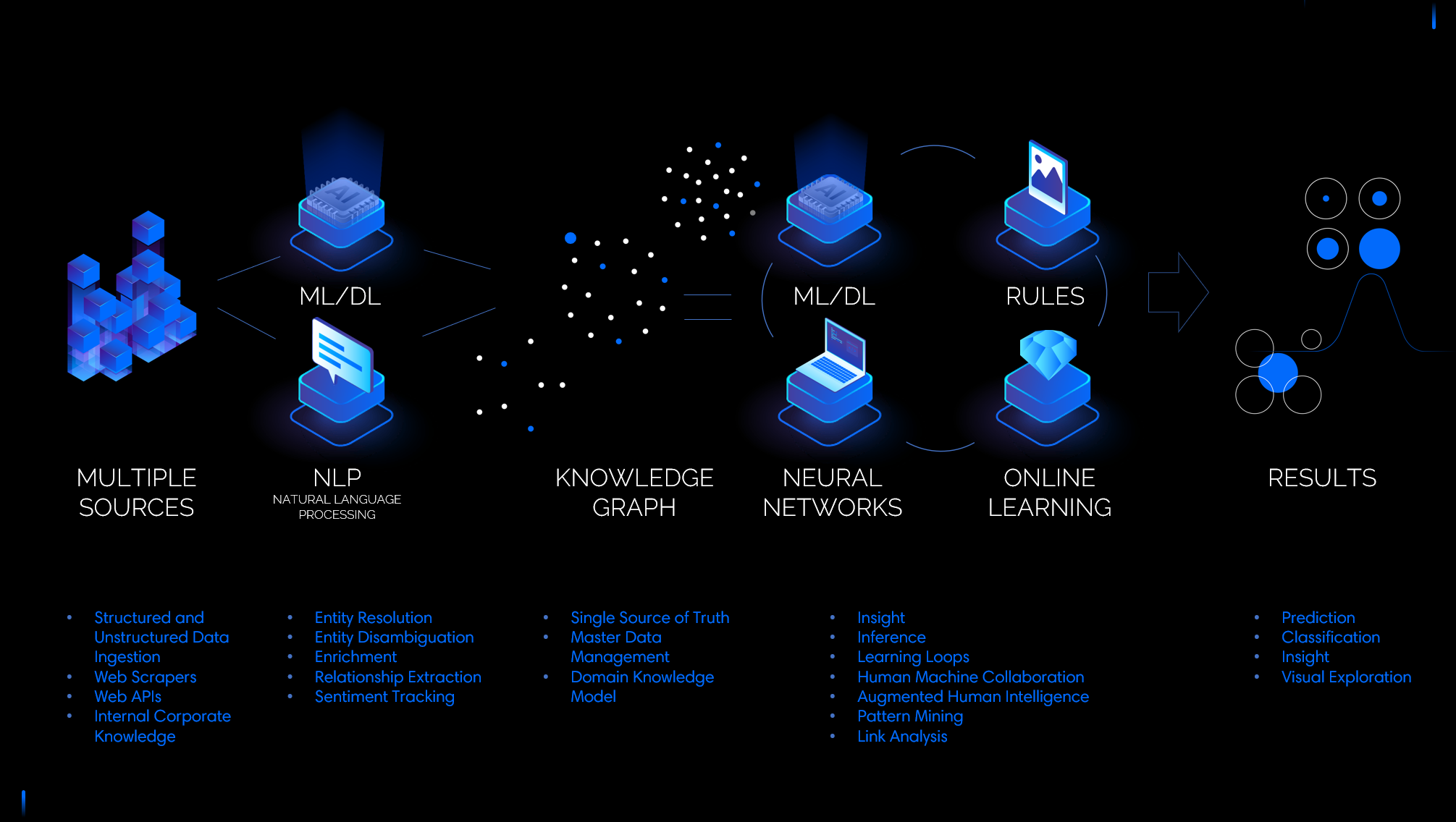
Graph 1: This graph explains the process used by a Composite AI system to analyse data from multiple sources and provide actionable insights.
Arguably the most effective AI technology to represent a symbolic model of the world (or a business environment) is the knowledge graph. A knowledge graph represents entities, activities, and the relationships between them. The entities are generally referred to as “nodes,” and can represent objects like customers, accounts, or computing devices. The relationships are depicted as lines (or “edges”) connecting the nodes, and can represent relationships such as “a customer owns a Twitter account.”
An IEEE paper asserts that:
Intelligent systems designed using machine learning algorithms require a large number of labelled data. Background knowledge provides complementary, real-world factual information that can augment the limited labelled data to train a machine learning algorithm. …Recent academic research and implemented industrial intelligent systems have shown promising performance for machine learning algorithms that combine training data with a knowledge graph.1
In addition to knowledge graphs and machine/deep learning, synergistic AI technologies include: NLP and symbolic AI. Natural Language Processing specializes in understanding language communication. Besides extracting facts from written texts, including audio transcripts, it is capable of detecting sentiment and causality. Symbolic AI, combined with graphs, allow the detection and evaluation of context and provide direction for a resolution path, in a similar way to a human expert. Deep learning excels in computational modelling of complex systems, prediction (imitation), exploration of scenarios, recognition, and filtering. Combining these technologies creates a system capitalising on their strengths and synergies to resolve more complex problems, faster, with less training data.
Introducing ELEMENT™
ELEMENT™ is an enterprise AI operating system developed by BlackSwan Technologies. BlackSwan is a SaaS/PaaS (Platform as a Service) product company that serves global, data-driven enterprises. Recently, Gartner named BlackSwan as an early leader in Composite AI.
ELEMENT™ incorporates not only composite AI, but a complete suite of intelligence-powered business process functionality. Data-intensive organisations use this system to resolve real-life, multi-dimensional problems that they face in their operations—predicting market potential, detecting fraudulent activity, or creating innovative products with features that excite customers. Domain-specific applications can be rapidly developed with the platform.
The system uses a self-learning approach to analyse data and find the best resolution to a business problem. While doing this, it employs a variety of approaches and techniques, similar to a human who is researching a case, using all his or her background knowledge and experience.

Graph 2: Example of Application Planner screen for easy steps to set up an application with a custom Data Model, AI Insights, and Data Operations.
How ELEMENT™ uses Composite AI
ELEMENT™ incorporates a range of AI methods at every step of the data-to-insight-to-action cycle. Below, we examine the steps along that journey and the AI technologies that best serve each step.
Data Aggregation. First, the system gathers data from a multitude of internal and external sources. A number of advanced algorithms are used to ingest structured and unstructured data and extract all the relevant information, even without relying on a pre-defined data schema.
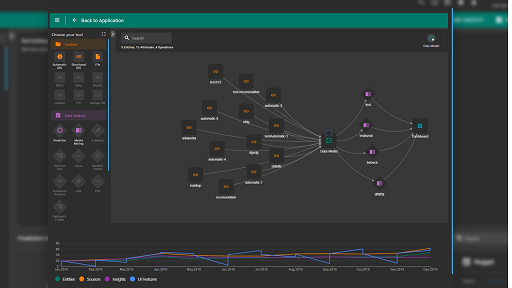
Graph 3: Example of visual modeling of data flow, including a number of sources, data model, data analysis modules and presentation dashboard.
Deep learning and Natural Language Processing techniques are very efficient at extracting information from unstructured text and from audio/video files, automatically reconciling heterogeneous data models and semi-structured information. This allows the creation of a comprehensive repository of internal corporate knowledge, as well as tapping into the full gamut of externally available knowledge.
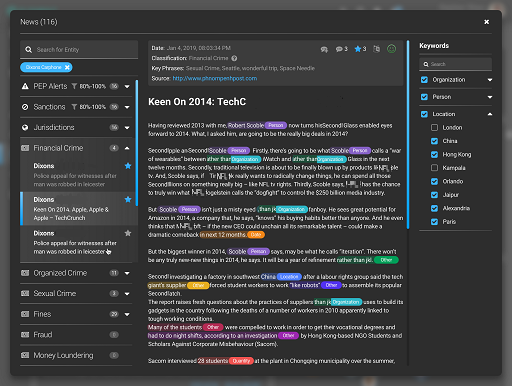
Graph 4: Example of an annotated text review screen based on advanced NLP text processing.
Information representation. After extracting the data, it is organised into the symbolic structures of a knowledge graph. To do this, the system uses leading ML algorithms for entity resolution and disambiguation. A “Data bring data” approach automatically enriches information on entities, whenever it encounters similar or related entities. After ingesting potentially billions of data references from thousands of sources, the information is left in a consistent, transparent state, readily available for review and further processing.
Insight Exploration. Moving ahead in the journey, ELEMENT™ provides a set of exploration tools ranging from simple classifiers to advanced ML models, transfer learning, and state-of-the-art graph algorithms for processing symbolic data. A completely transparent depiction of entities and relationships through a Visual Link Analysis leads to efficient interaction between the AI system and domain experts (for more information see this series of articles).
Decisioning. The above techniques enable knowledge-based answers to business questions. Each business situation requiring a decision can be reviewed by domain experts and/or acted on by automated rules and policies, directing that case to the best resolution path. Based on expert derived workflows, the task of problem resolution is divided into logical steps that business professionals can handle efficiently.
Self-Learning. Furthermore, ELEMENT™ dynamically improves the internal decisioning workflows and rules based on continuous AI learning loops. Each time a domain analyst interacts with the system, the expert input is considered as a guidance to improve further decisions. With this cognitive approach, resolution of each step in a situation becomes the basis for the following decisions and new activities, until the problem is resolved.
Use Case – Insurance
As an AI operating system, ELEMENT™, similarly to a human expert, uses a diverse set of skills to gather and understand information, to efficiently resolve complex problems. This hybrid approach technically combines advanced deep learning and symbolic AI methods to capitalize on each approach’s advantages. It addresses more complex problems including causation as well as porting existing knowledge to new environments. Far less data is needed than with a pure deep learning approach.
As a practical example, we can see how the system might approach the task of offering the best insurance plan to a new customer. Each bullet below represents a step in the process, and the text underneath describes the data or task involved.
- Step/AI Approach: Pre-define characteristic attributes of a prospective customer
Activity: I.e., a new company customer seeking insurance coverage. Merge an industry/domain representation with a custom, organisation-specific view of company’s prospects. - Gather relevant information about the prospective customer
Company overview, activity, insurance history, relationships, location, industry, ownership, customer ranking, related news and publications, sanctions and watchlists, etc. based on multiple sources and automatic NLP + ML data processing. - Access domain knowledge related to this customer/case
Insurance plans available internally and externally, details about location, industry, customer base, similar companies – all organised in a form of an actionable knowledge graph as a transparent and easy-to-explore data repository. - Use rules and symbolic AI
Analyse the customer in a broad context, propose segmentation and path for resolution of the case based on AI inference rules and advanced graph analysis. - Use additional AI techniques to set and verify hypotheses
Automatically propose a hypothesis: The customer has a high likelihood of accepting basic coverage with a 20% discount offer. In 2 years, the customer has a high potential to upgrade the coverage with additional options and bring two more similar companies as a reference. - Propose case resolution
For potential customers, the system will automatically initiate contact and send an invitation with a link to an AI-enabled chatbot, to negotiate an insurance proposal for basic coverage. The system will also check with the customer about the details of his plans to expand his operation into a new area, as vougly mentioned by his blog post, to explore immediate additional opportunities. If needed, the system will engage an account manager to work further with the customer. - Get feedback
Use the outcome of the case to learn and automatically improve the AI algorithms.
Applying Composite AI to your business challenges
ELEMENT™, the enterprise AI operating system developed by BlackSwan Technologies, comes with a rapid development framework, known as ELEMENTRY™. An enterprise can build a complete proof of concept in one sitting—applying a range of AI techniques—and deploy an operational prototype within weeks.
We are ready to collaborate with you to apply Composite AI to increase the efficiency and lower the cost of your business operations. Contact BlackSwan Technologies to set up a discussion and demonstration.
Learn more about BlackSwan Technologies at blackswantechnologies.ai or follow us on Twitter and LinkedIn
1. Bhatt S., Sheth A., Shalin V., March 2020, Knowledge Graph Semantic Enhancement of Input Data for Improving AI, IEEE Internet Computing 24(2):66-72

